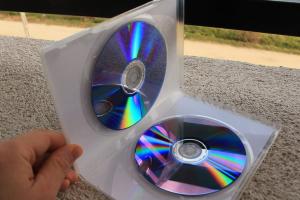Ultimate Guide on How to Copy a Protected DVD Easily

-
Quick Links:
- Introduction
- Understanding DVD Protection
- Legal Considerations
- Tools Needed
- Step-by-Step Guide to Copying a Protected DVD
- Common Issues and Solutions
- Expert Insights
- Case Studies
- FAQs
Introduction
In today's digital age, the desire to preserve beloved DVDs is common, yet many are hindered by the various protections these discs employ. This guide will provide a comprehensive overview of how to copy a protected DVD, ensuring your collection remains intact without sacrificing quality.
Understanding DVD Protection
DVDs can be protected in several ways to prevent unauthorized copying and distribution. The most common forms of protection include:
- CSS (Content Scramble System): A form of encryption that scrambles the content of the DVD.
- Region Codes: Limits DVD playback to specific geographical areas.
- Macrovision: A technology that prevents copying by altering the video signal.
Understanding these protections is crucial as they dictate the methods and tools you will need to successfully copy a protected DVD.
Legal Considerations
Before proceeding with copying DVDs, it's essential to be aware of the legal implications. In many jurisdictions, circumventing DVD protection may violate copyright laws, even for personal use. Always check your region's laws regarding DVD copying and backup.
Tools Needed
To copy a protected DVD, you will require specific tools. Here is a list of recommended software and hardware:
- DVD Ripping Software: Programs like HandBrake, MakeMKV, or AnyDVD.
- Blank DVDs: For copying the data onto a new disc.
- DVD Drive: A working DVD drive is essential for reading and writing discs.
Step-by-Step Guide to Copying a Protected DVD
Here is a detailed, step-by-step process for copying a protected DVD:
Step 1: Install the Required Software
Download and install a reliable DVD ripping software. For instance, HandBrake is a popular choice. Ensure you follow installation instructions to set it up correctly.
Step 2: Insert the Protected DVD
Insert the DVD you wish to copy into your DVD drive. The software should recognize it automatically.
Step 3: Select the Source
Open your DVD ripping software and choose the DVD as the source. The software typically scans the DVD to analyze the protected content.
Step 4: Choose Output Settings
Configure the output settings according to your preferences. This includes choosing the format (MP4, MKV) and quality settings.
Step 5: Start the Ripping Process
Begin the ripping process by clicking the appropriate button in the software. This may take several minutes, depending on the size of the DVD.
Step 6: Burn the Copied Files to a New DVD (Optional)
If you want a physical copy, use burning software like CDBurnerXP to write the ripped files onto a new blank DVD.
Common Issues and Solutions
When copying DVDs, you may encounter various issues. Below are some common problems and their solutions:
- DVD Not Recognized: Ensure the DVD is clean and free of scratches.
- Ripping Errors: Check if the software is up to date, or try an alternative program.
- Playback Issues: Ensure that the output format is compatible with your playback device.
Expert Insights
We consulted industry experts who provided valuable insights on the best practices for copying DVDs.
According to Jane Doe, a digital rights advocate, "Understanding the legal ramifications and ensuring you are compliant with copyright laws is crucial before attempting to copy DVDs." Additionally, John Smith, a tech consultant, states, "Using reliable software with a good user community can significantly reduce issues during the copying process."
Case Studies
Here are two case studies showcasing successful DVD copying:
Case Study 1: Family Movie Night
A family used HandBrake to copy their collection of children's movies for a family movie night. They encountered some initial hiccups but solved them by consulting online forums and following instructional videos. Their experience highlighted the importance of community support when tackling technical challenges.
Case Study 2: Archiving Old Films
A filmmaker wanted to preserve their classic films stored on DVDs. They utilized MakeMKV to rip the DVDs and successfully archived their work in high quality, facilitating easier access for future projects.
FAQs
1. Is it legal to copy a protected DVD?
It depends on your jurisdiction. In many places, it's illegal to circumvent DVD protections, even for personal use.
2. What software is best for copying protected DVDs?
Popular options include HandBrake, AnyDVD, and MakeMKV.
3. Can I copy a DVD to a USB drive?
Yes, once you rip the DVD, you can save the files to a USB drive.
4. What formats can I copy DVDs into?
Common formats include MP4, MKV, and AVI.
5. Will copying a DVD reduce its quality?
Quality can be maintained if the correct settings are used during the ripping process.
6. How long does it take to copy a DVD?
The process can take anywhere from 10 to 60 minutes, depending on the software and computer speed.
7. Can I copy a DVD using a Mac?
Yes, many ripping software options are available for Mac users, including HandBrake and MakeMKV.
8. What should I do if my DVD is scratched?
Try cleaning the DVD gently or using DVD repair kits. If it remains unplayable, consider using recovery software.
9. Can I copy DVDs to my phone?
Yes, you can rip DVDs and transfer the files to your phone, provided the format is compatible.
10. Is there a risk of losing data when copying DVDs?
As long as you follow proper procedures and use reliable software, the risk should be minimal.
Random Reads